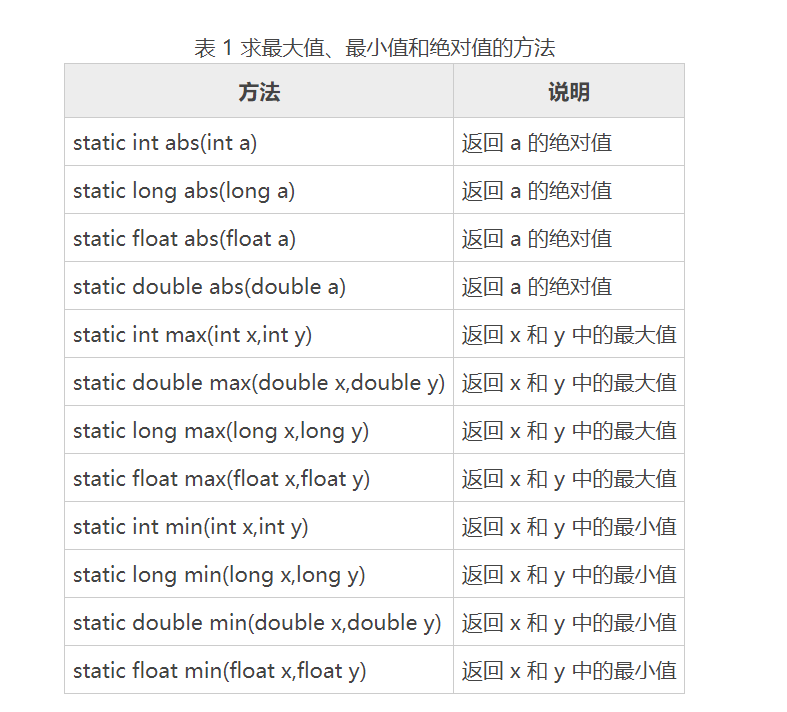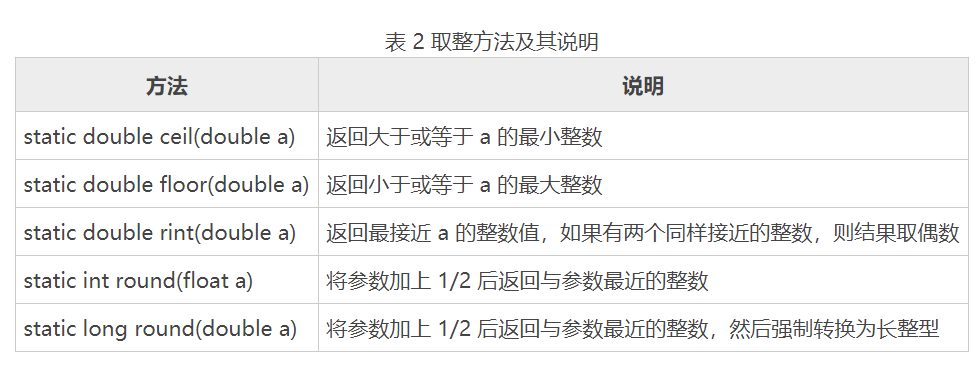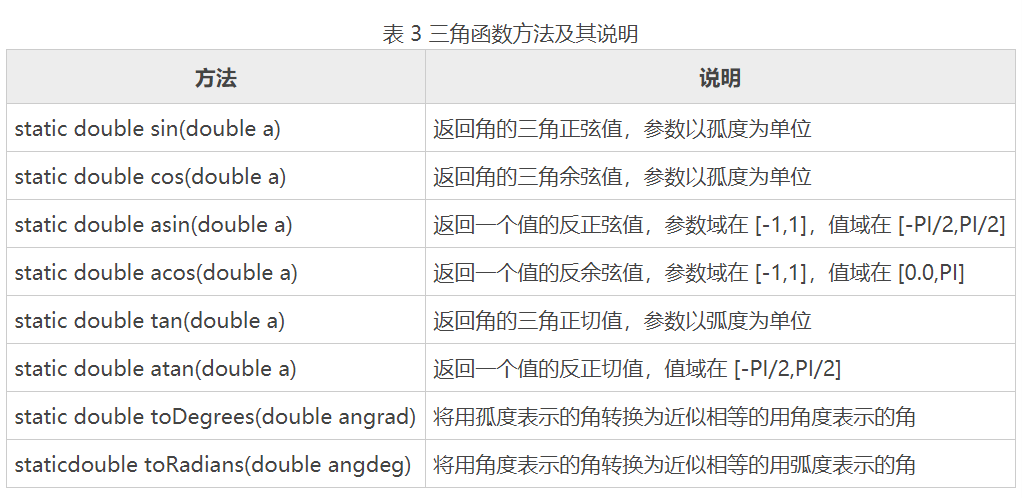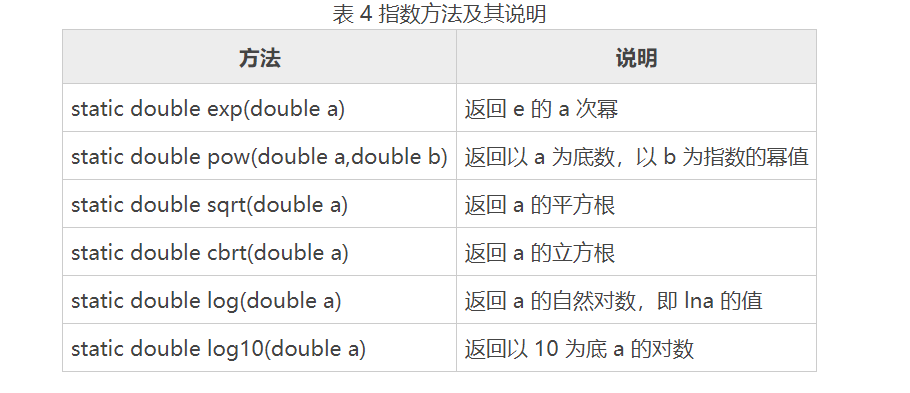JAVA的心动之旅
Day1 字符串String
1.0 字符串的特点以及创建一个字符串
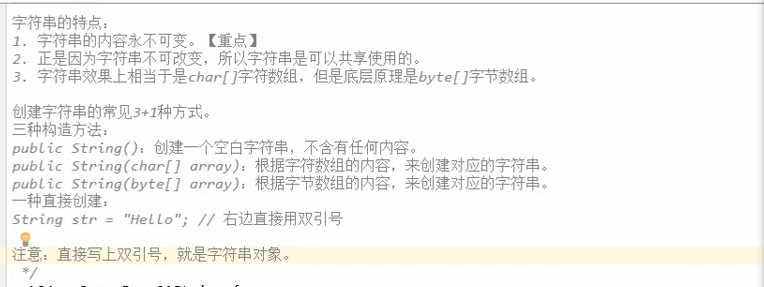
public class Practice {//构建字符串的3+1种方法
public static void main(String[] args) {
//第一种
String one=new String();
System.out.println("输出的字符串为:"+one);
//第二种
char str[]={'A','B','C'};
String two=new String(str);
System.out.println("输出的字符串为:"+two);
//第三种
byte []bytes={97,98,99,100};
String three=new String(bytes);
System.out.println("输出的字符串为:"+three);
//+1种 直接构造 字符串常量不可改变
String four="HelloWorld";
System.out.println("输出的字符串为:"+four);
}
}
打印结果:
输出的字符串为:
输出的字符串为:ABC
输出的字符串为:abcd
输出的字符串为:HelloWorld
2.0 字符串的常量池
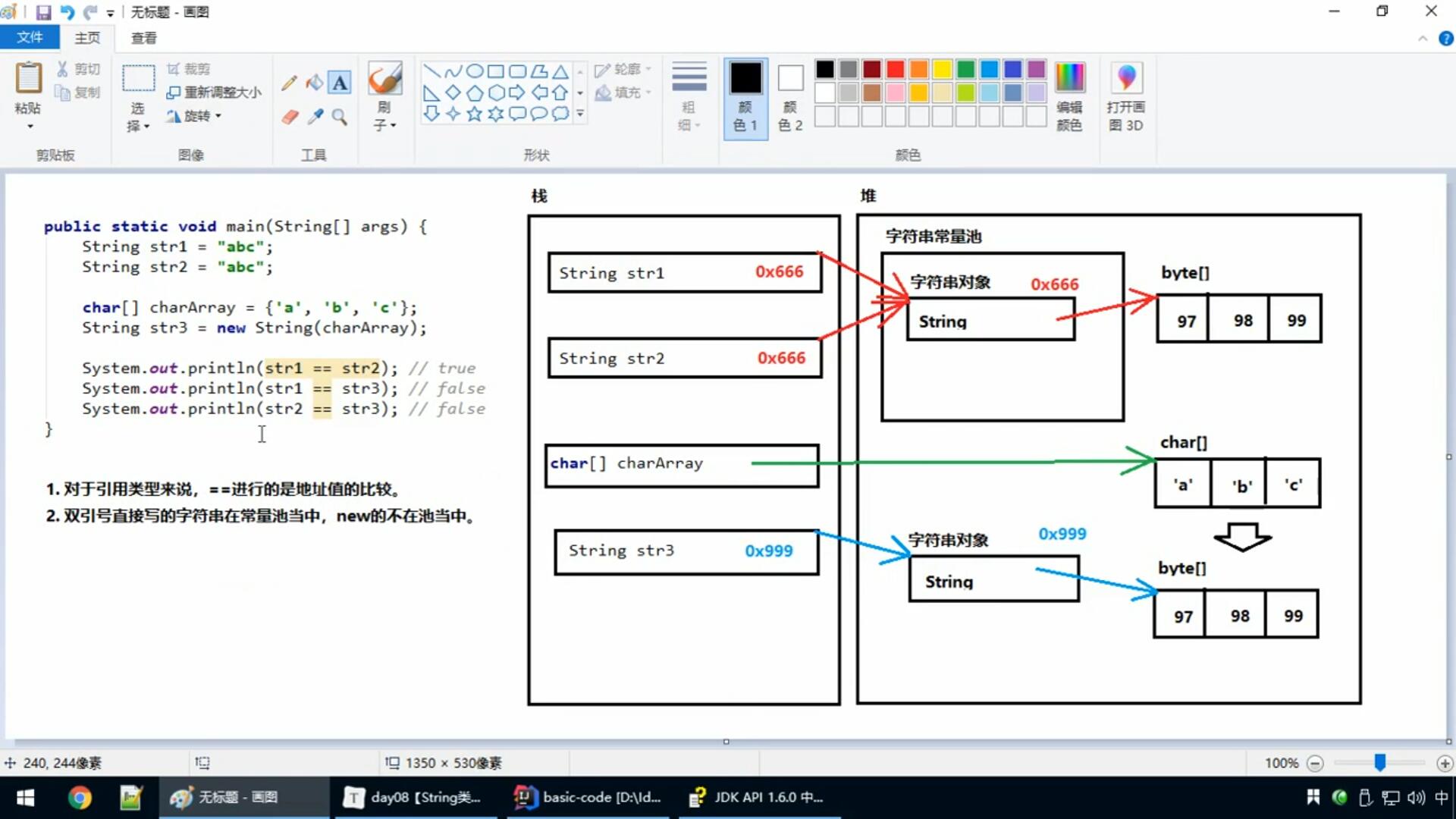
3.0 字符串的获取方法

public class Practice {
public static void main(String[] args) {
String one="Hello";
System.out.println("字符串的长度为:"+one.length());
String two="say ".concat(one);
System.out.println("字符串为:"+two);
for(int i=0;i<two.length();i++)
{
char ch=two.charAt(i);
System.out.print(ch+" ");
}
String three="o";
System.out.println("
"+one.indexOf(three));
String four="h";
System.out.println(one.indexOf(four));
}
}
打印结果
字符串的长度为:5
字符串为:say Hello
s a y H e l l o
4
-1
4.0 字符串的比较 ==为地址的比较

5.0 字符串的截取

public class Practice {
public static void main(String[] args) {
String one="hellobts";
String two=one.substring(5);
System.out.println(two);
String three=one.substring(0, 5);
System.out.println(three);
}
}
打印结果:
bts
hello
6.0 字符串的转化方法

public class Practice {
public static void main(String[] args) {
String one="hellobts";
char a[]=one.toCharArray();
for(int i=0;i<a.length;i++)
{
System.out.print(a[i]+" ");
}
System.out.println();
byte []bytes=one.getBytes();
for(int i=0;i<bytes.length;i++)
{
System.out.print(bytes[i]+" ");
}
System.out.println();
String two=one.replace("hello", "love");
System.out.println(two);
}
}
打印结果:
h e l l o b t s
104 101 108 108 111 98 116 115
lovebts
Day2 static 关键字
1.0 static 概述
一旦用了static 关键字,那么这样的内容不再属于对象自己,它是属于类的,所以凡是本类的对象,都共享一份。
2.0 static 修饰成员变量
public class Students {
private static int idcounter=0;//每当创建一个对象(new)计数器++
static String room;
private String name;
private int age;
private int id;
public Students() {
this.id=++idcounter;
}
public Students(String name, int age) {
this.name = name;
this.age = age;
this.id=++idcounter;
}
public int getId() {
return id;
}
public void setId(int id) {
this.id = id;
}
public String getName() {
return name;
}
public void setName(String name) {
this.name = name;
}
public int getAge() {
return age;
}
public void setAge(int age) {
this.age = age;
}
}
public class Practice { public static void main(String[] args) { Students one=new Students("田小娟",22); one.room="101教室"; Students two=new Students("徐穗珍",22); System.out.println("姓名:"+one.getName()+" "+"年龄:"+one.getAge()+" 教室:"+one.room+
" 学号"+one.getId()); System.out.println("姓名:"+two.getName()+" "+"年龄:"+two.getAge()+" 教室:"+two.room+
" 学号"+two.getId()); } }
3.0 static 修饰方法
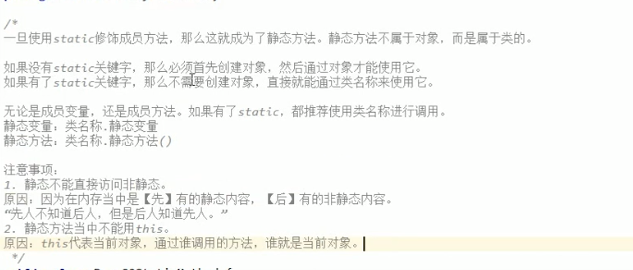
4.0 静态代码块

Day3 与Arrays相识

1.0 简单的应用
import java.util.Arrays;
public class Practice {
public static void main(String[] args) {
int []num={3,89,45,235,43,79};
String str=Arrays.toString(num);
System.out.println(str);
Arrays.sort(num);
for(int i=0;i<num.length;i++)
{
System.out.print(num[i]+" ");
}
}
}
打印结果:
[3, 89, 45, 235, 43, 79]
3 43 45 79 89 235
2.0 字符串倒序
import java.util.Arrays;
public class Practice {
public static void main(String[] args) {
String str="aihfjsdfhuwefwnf";
//定义一个随机的字符串,并将字符串排序后倒序输出
//需将字符串先转化为字符数组,才能使用Arrays
char []chars=str.toCharArray();
Arrays.sort(chars);
for(int i=chars.length-1;i>=0;i--)
{
System.out.print(chars[i]+" ");//w w u s n j i h h f f f f e d a
}
}
}
Math类方法(百度)
